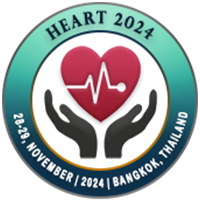
Mickey Scheinowitz
Tel Aviv University, IsraelTitle: Differences in thermographic responses to aerobic and anaerobic exercise
Abstract
Background: Many studies investigated infrared (IR) thermographic changes following exercise mostly aerobic, but much less, following short, vigorous anaerobic exercise.
Aim: To investigate the surface temperature changes of the respiratory muscles (chest) during high intensity aerobic exercise and of the lower and upper limbs, following an anaerobic effort. Methods: Thermal images were taken at rest, and then during each stage of the aerobic exercise (until exhaustion) from 18 volunteers, and immediately after the Wingate anaerobic test, from 24 volunteers. Images were processed to obtain a mean and max temperature in the regions of interest. We also developed an algorithm to calculate the distribution of temperature and texture (entropy) within each region.
Results: No changes were found in absolute temperatures, though the entropy of the chest surface area increased significantly throughout the aerobic exercise test, and was significantly correlated with exercise duration, intensity, and pulmonary ventilation (r = 0.9515, p < 0.001). Following the anaerobic exercise maximal surface temperatures were significantly higher in all measured regions (p<0.04). Participants who exhibited lower anaerobic capacity had a higher delta increase in surface leg's temperature compared with participants with higher anaerobic capacity who had a minimal change in leg's temperature.
Conclusion: Non-invasive thermal imaging during aerobic exercise showed high correlation with the work of breathing during high intensity aerobic exercise, while following anaerobic exercise, surface temperatures continue to increase, even into the recovery period. Further studies are required to validate our results on other patient's populations.
Biography
To be updated soon..

